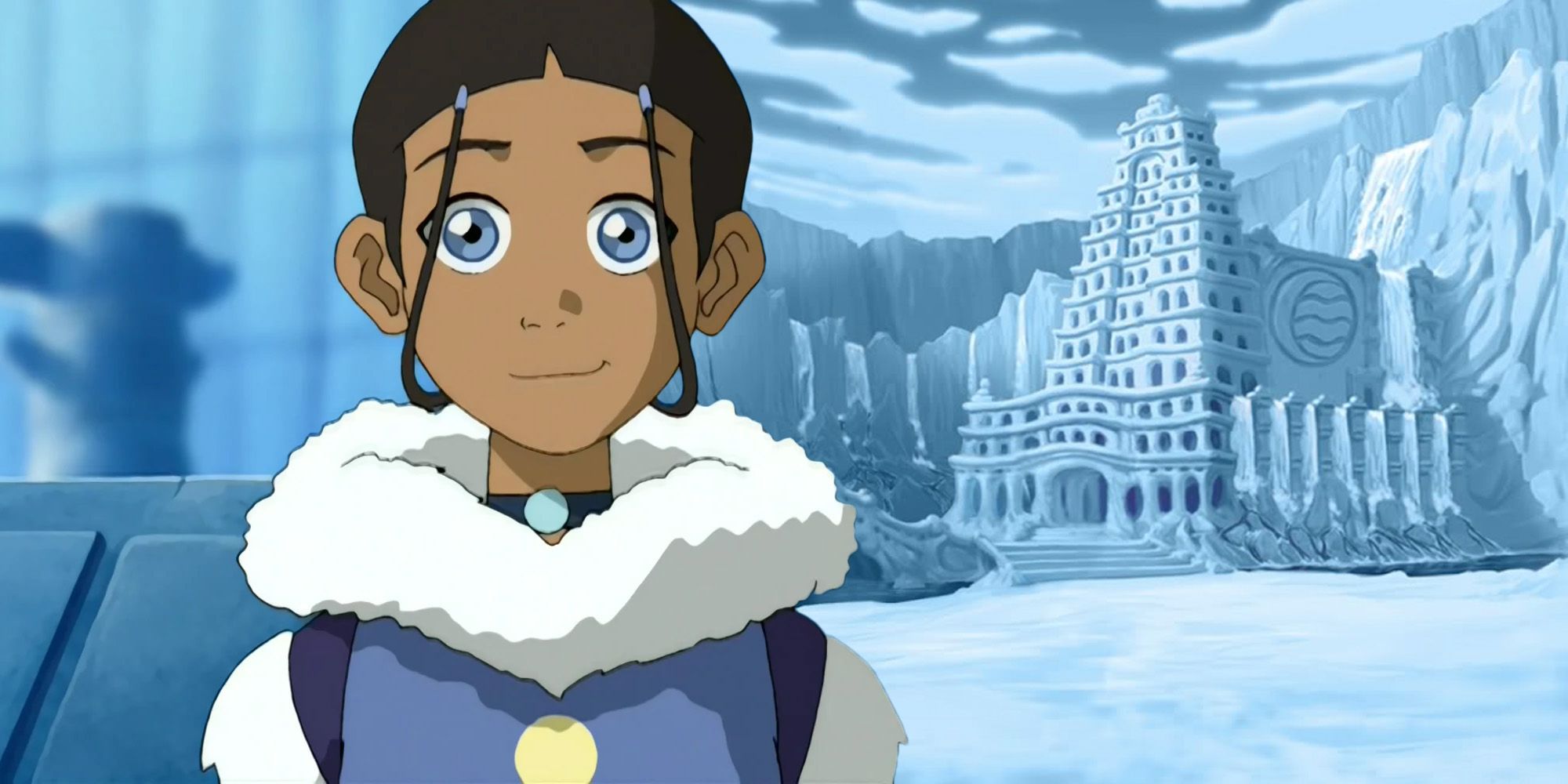In Avatar: The Last Airbender, Team Avatar visits the Northern Water Tribe, which uses an interesting building material to support their structures that are primarily made of ice and stone. At the end of Avatar season 1, Aang, Sokka, Katara, Momo, and Appa visit the Northern Water Tribe to improve both Aang and Katara’s waterbending skills.
During their visit, Sokka begins to spend more time with Princess Yue, daughter of the Northern Water Tribe’s chief. While Sokka and Yue are flying over the ocean with Appa, they notice ash falling from the sky and realize that the Fire Nation is coming to attack the Northern Water Tribe. In Avatar season 1, episode 19, "The Siege of the North: Part 1," Sokka helps the Northern Water Tribe soldiers prepare for battle in the armory - and it’s in the armory that a unique kind of building material can be spotted.
The doorframe and roof supports within the armory are made of whale bones – specifically, whale ribs. This is confirmed in the book Avatar: The Last Airbender – The Art of the Animated Series. The book contains several early Avatar concept sketches, with one small sketch, in particular, depicting the Northern Water Tribe armory. The sketch includes text labeling the whalebone doorframe and a footnote explains that the Northern Water Tribe’s limited access to resources meant that they used whalebone in their architecture.
In real life, whalebone was used in dwellings by Thule people (the ancestors of Inuit living in Alaska, Canada, and Greenland) as early as 800 A.D. and by Inuit as late as the 1950s. Bowhead whalebone was the most common type of whalebone used in a structure called qarmaq in Inuktitut. In some cultures, the qarmaq had similarities to both an igloo (iglu) and a tent. Different materials were used depending on the time of year. Timber is scarce in the tundra, so whalebones, boulders, moss, and animal skins were used for shelter. During the winter, snow was often packed onto the qarmaq for improved shelter.
Similar to the real-life Thule and Inuit peoples, the fictional Northern Water Tribe has little access to wood or other building materials – though they do have supernatural bending abilities that allow them to easily carve massive and intricate structures out of ice. It's been noted that the Northern Water Tribe's architecture actually resembles that of Italy, while the Southern Water Tribe architecture is more closely based on Inuit dwellings. But since both the Northern and Southern Water Tribes in Avatar: The Last Airbender drew inspiration from Inuit peoples and cultures, it makes sense that this detail of Inuit architecture was included.


